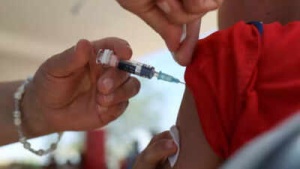An image shows Shubhanshu Shukla in space holding the Indian flag.
NEW DELHI – The International Space Station (ISS) has officially welcomed its first Indian astronaut, Shubhanshu Shukla, amidst heartfelt embraces and jubilant celebrations.
The spacecraft "Grace," the fifth in the Dragon series, achieved a smooth docking with the ISS at 16.01 IST on Thursday, precisely over the North Atlantic Ocean.
Shukla becomes only the second Indian to venture into space, following Rakesh Sharma's groundbreaking mission in 1984. Accompanying Shukla on the Axiom-4 mission are Slawosz Uznanski-Wisniewski, marking Poland’s return to space after 1978, and Tibor Kapu, the first Hungarian astronaut in 45 years. The crew's journey began on Wednesday from NASA's Kennedy Space Center.
India has demonstrated remarkable capabilities in space exploration, notably with the successful deployment of an orbiter around Mars and the soft landing of a robotic spacecraft near the Moon’s south pole.
Shukla's experiments on the Axiom-4 mission are specifically tailored to bolster the Gaganyaan program. His research will investigate the effects of microgravity on areas critical to long-term space travel:
Shukla will also study tardigrades to better understand survival mechanisms in extreme conditions. The ultimate goal is to create sustainable space food systems, ensure astronaut well-being, and improve life support strategies for future Indian space endeavors.
NISAR Satellite: NASA and ISRO are preparing to launch the NISAR satellite in July from India’s Satish Dhawan Space Centre. This joint $1.5 billion Earth-observing mission will utilize advanced radar to continuously monitor surface changes. This will yield valuable data for:
Unlike many Earth-observing satellites that are restricted by daylight and weather conditions, NISAR’s cutting-edge radar technology will enable round-the-clock, all-weather imaging. This will provide unparalleled accuracy in tracking natural disasters, environmental changes, and farming trends.
NISAR holds the potential to revolutionize how scientists, farmers, and disaster response teams operate worldwide.
Newer articles
 Gavaskar Calls for Kuldeep Yadav's Inclusion in Second Test Amid Bumrah Fitness Concerns, Cites Edgbaston Spin Advantage
Gavaskar Calls for Kuldeep Yadav's Inclusion in Second Test Amid Bumrah Fitness Concerns, Cites Edgbaston Spin Advantage
 Indian Astronaut Shukla Arrives at ISS, Ushering in New Era for Space Program
OR
India Celebrates as Shukla Reaches ISS, Advancing Ambitious Space Goals
Indian Astronaut Shukla Arrives at ISS, Ushering in New Era for Space Program
OR
India Celebrates as Shukla Reaches ISS, Advancing Ambitious Space Goals
 Rishabh Pant Revolutionizing Cricket, Says Greg Chappell
Rishabh Pant Revolutionizing Cricket, Says Greg Chappell
 Toxic Workplace Warning Signs: Spot the Red Flags Early
Toxic Workplace Warning Signs: Spot the Red Flags Early
 Global Immunization Crisis: Millions of Children at Risk as Vaccine Coverage Lags, Study Reveals
Global Immunization Crisis: Millions of Children at Risk as Vaccine Coverage Lags, Study Reveals
 Indian Cricket Star Mukesh Kumar and Wife Divya Singh Announce the Arrival of Baby Boy
Indian Cricket Star Mukesh Kumar and Wife Divya Singh Announce the Arrival of Baby Boy
 Moto G54 Price Slashed in India: Check Out the Discounted Rates and Specs
Moto G54 Price Slashed in India: Check Out the Discounted Rates and Specs
 IRCTC Launches AI Chatbot 'AskDisha 2.0' to Revolutionize Train Ticket Booking and Customer Service
IRCTC Launches AI Chatbot 'AskDisha 2.0' to Revolutionize Train Ticket Booking and Customer Service
 Cummins Lauds Australia's Dominant Start to WTC Campaign After West Indies Series Win
Cummins Lauds Australia's Dominant Start to WTC Campaign After West Indies Series Win
 Smith Targets Test Return After Innovative Baseball Cage Rehab in New York
Smith Targets Test Return After Innovative Baseball Cage Rehab in New York